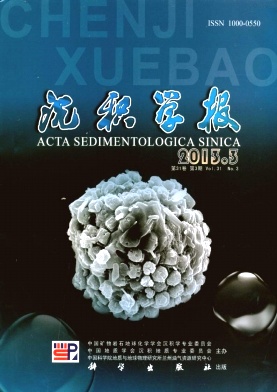Distribution and Molecular Composition of Organic Matter in Surface Sediments from the Central Part of South Yellow Sea
- Publish Date: 2013-06-10
-
Key words:
- sediment /
- organic matter /
- elements /
- n-alkanes /
- /
- origin /
- South Yellow Sea
Abstract: Approximately half of the world's net annual photosynthesis occurs in the oceans (~48 Pg C y-1). Continental margin support 10%~15% of this production. Thus, continental margin seas play the critical role for the energy conversion and carbon cycle in marine ecosystems. However, it is more difficulty to identify the source of these organic matters because continental margin has been affected by both marine currents and terrestrial rivers. The Yellow Sea, a typical semienclosed epicontinental sea, rests on a flat, broad, and tectonically stable seafloor with water depth of average 55 m and maximum 100 m. The Yangtzi River and Yellow River around the Yellow Sea bear remarkably different sizes, water, and sediment discharges; they were regarded to have governed the sediment of major parts of the Yellow Sea during Holocene. This paper is aimed to determine the source, behavior and composition of organic matters access to the understanding the characteristics in nalkanes, total organic carbon, and elements. Another attempt to assess the sediment environment of organic matters and the approaches to discriminate differently sourced organic. The 501 surface sediments from the central part of South Yellow Sea show in detail the characteristics and main factors of the organic matter based on the total organic carbon, grain size, and major elements. There are 64 samples from the above surface sediments detected by GCFID to understand the molecular composition of organic matter in further. The study suggests that the total organic carbon are higher in the eastern part of this region than in the western part area, which affected by the background of the regional circulation patterns in the Yellow Sea, as there are positive correction between the total organic carbon and the concentration of Al2O3, as well as the grain size (median size), although the former seemed more positive. Principal component analysis (PCA) based on correlation was performed using the individual nalkane, as another tool to analyze the compositional distribution of nalkanes in sediment and assess their sources. This analysis identified two principal components registering 71% (Factor 1) and 26% (Factor 2) of total variance, which represents terrestrial plants and marine plank contribution individually. The distribution of nalkanes reveals that the organic matter mainly comes from terrestrial plants, which contain the approximate equal amounts of grassy and woody plant. Marine plank tonic algae organic matter is the second important component, as the isoprenoids indicates the obvious reducing environment related shorter chain nalkanes. Hierarchical cluster examination (HCA) for nalkanes, total organic matter (TOC), grain size (median size) and elements was carried out, grouping the sampled sites. There are three groups samples/sampled sites through HCA analysis in this study area: The Ⅰ group samples may represents primary terrestrial organic matters, the Ⅱ group samples may represents mobile terrestrial organic matters, which were affected by the marine plank input more obviously, and the Ⅲ group samples response anthropogenic factor. The terrestrial organic matters are derived from Yellow Sea which included the old Yellow River and the modern Yellow River. The petroleum pollution input seemed more objective in some sample, and it is common to bacterial production in organic matter of surface sediments. The study shows that it is more precise to combine inorganic geochemical approaches and organic geochemical approaches to understand the origin and dispersal patterns of organic matter in marine sediment, even to establish the fate of terrestrial organic matter in marine environment.
| Citation: | Distribution and Molecular Composition of Organic Matter in Surface Sediments from the Central Part of South Yellow Sea[J]. Acta Sedimentologica Sinica, 2013, 31(3): 497-508. |






 DownLoad:
DownLoad: